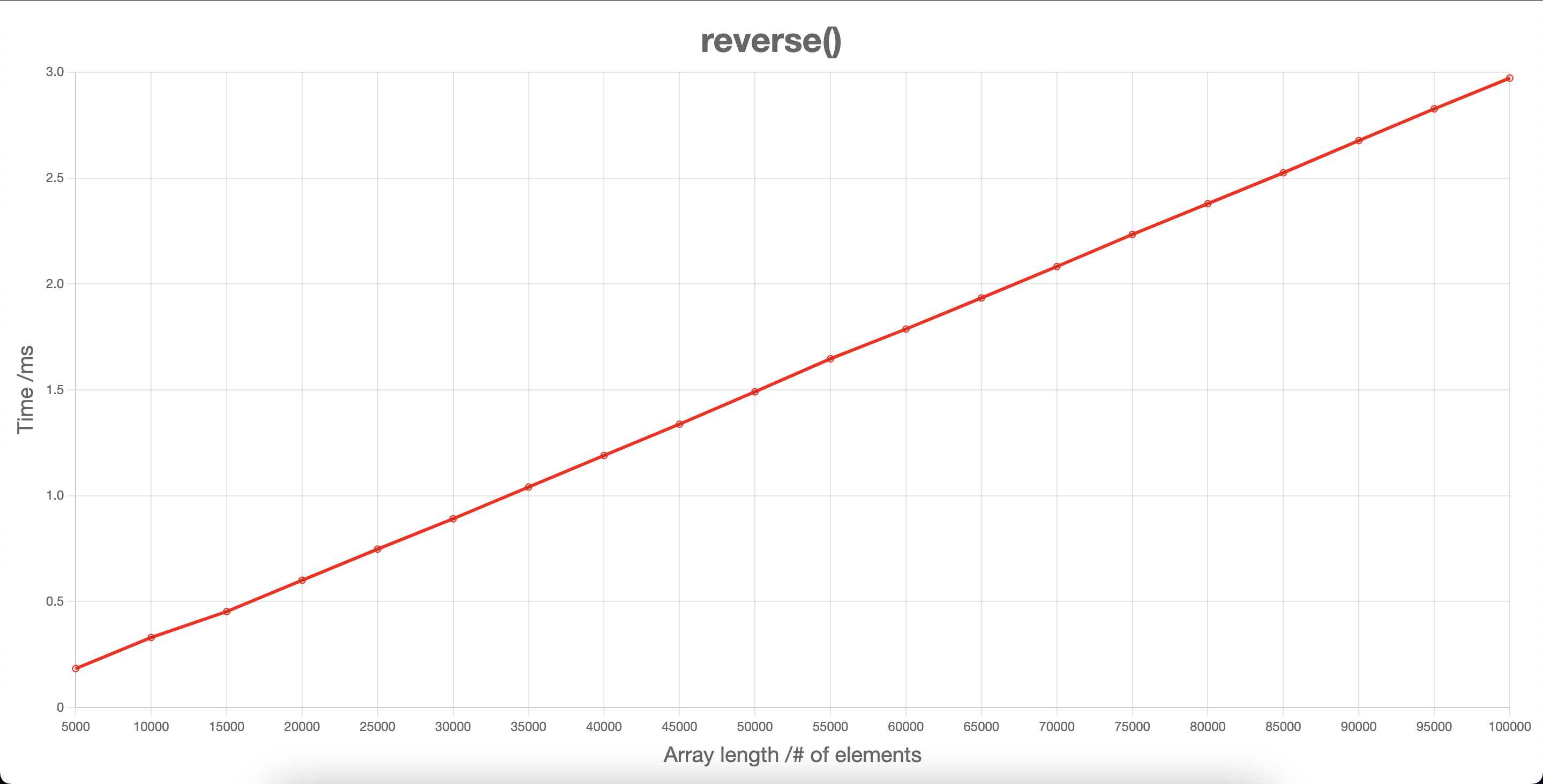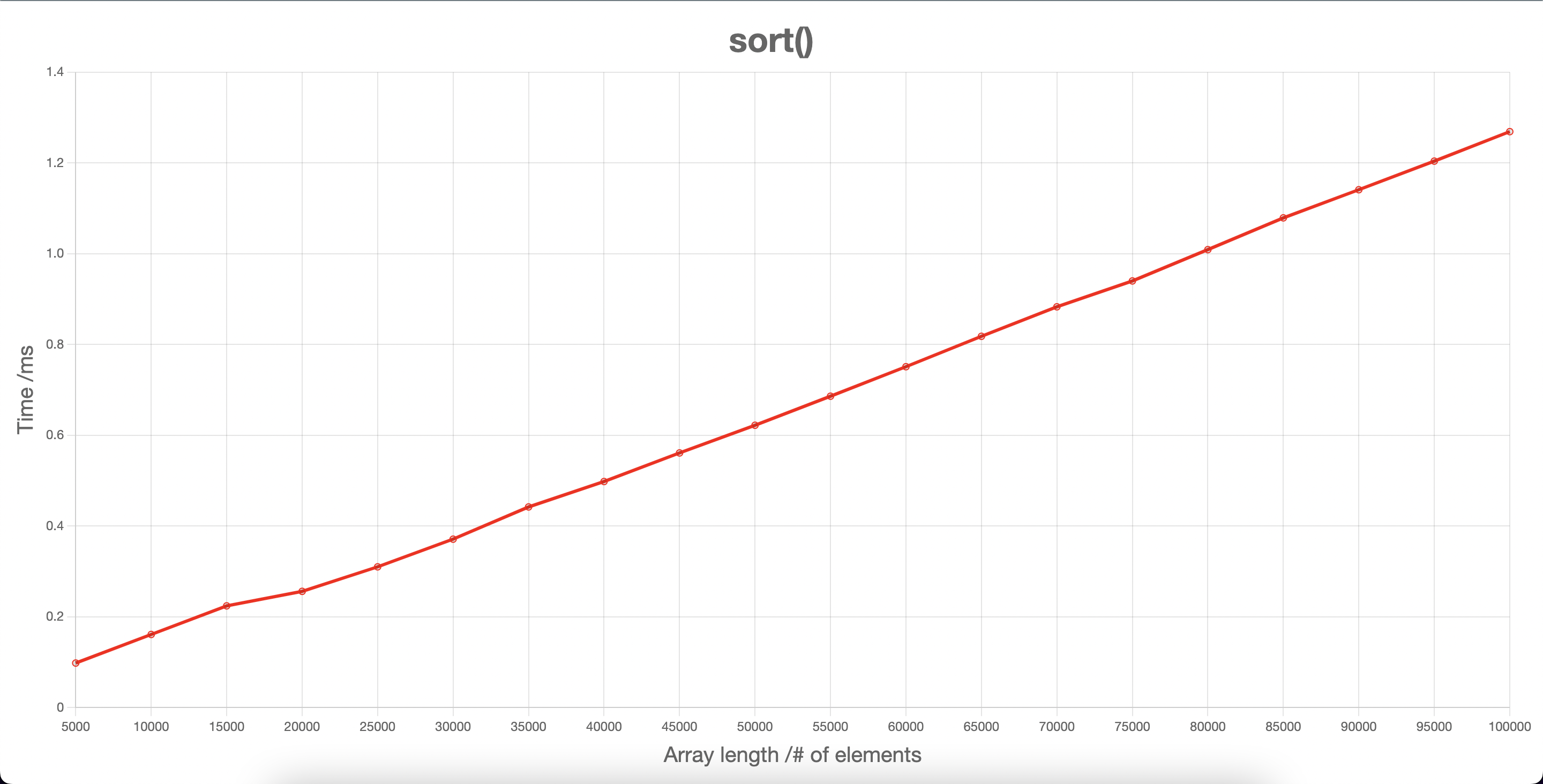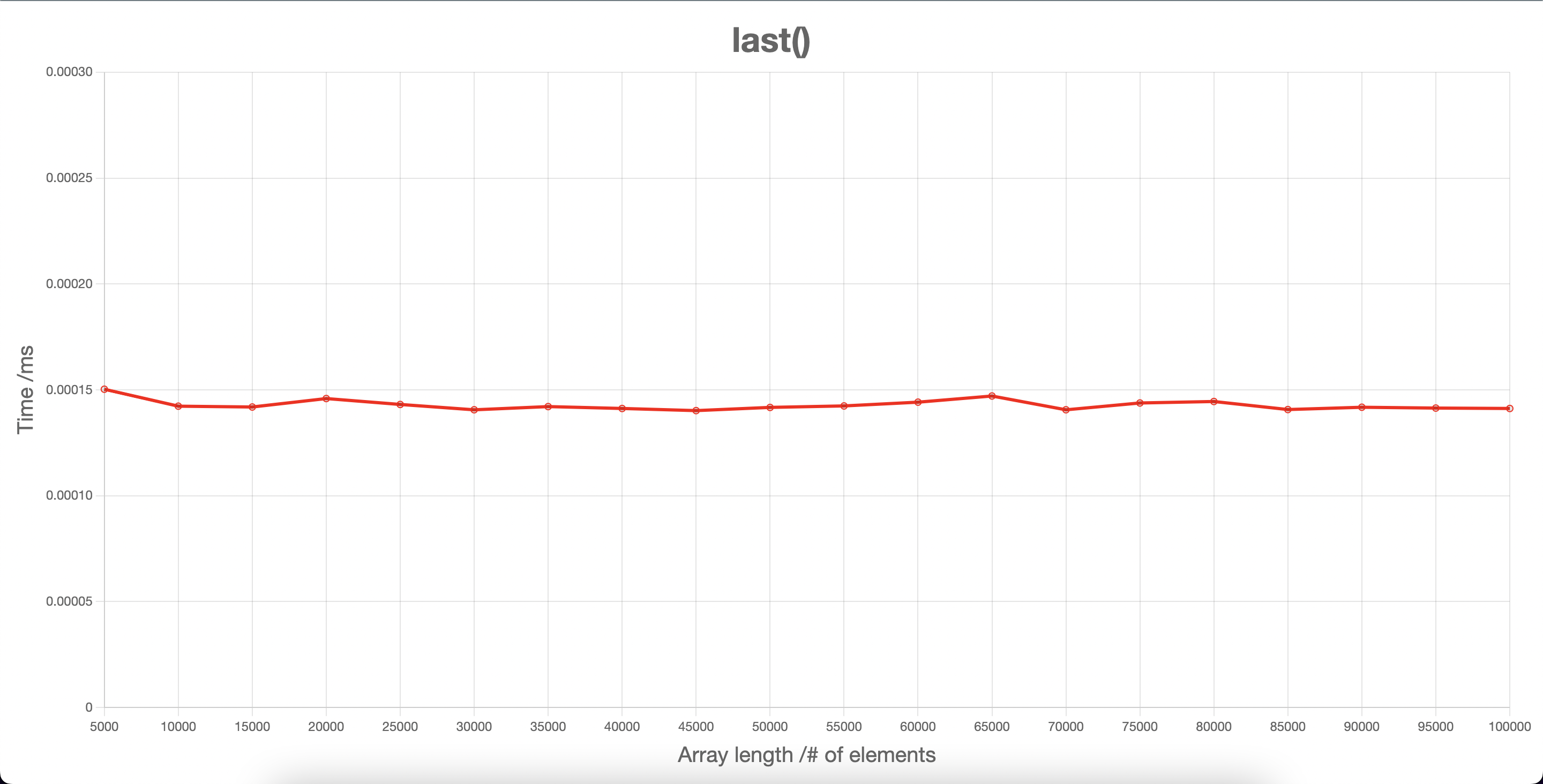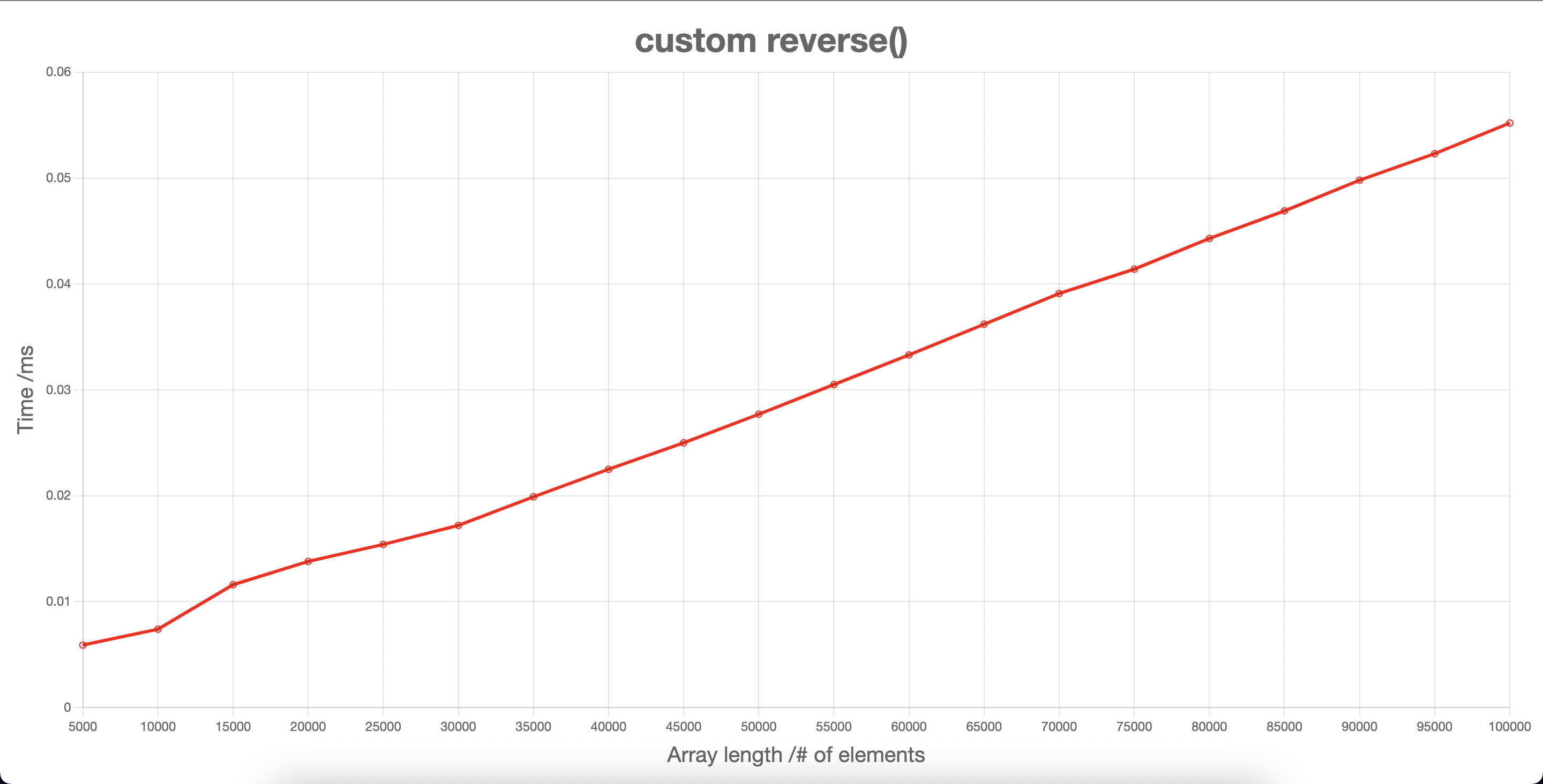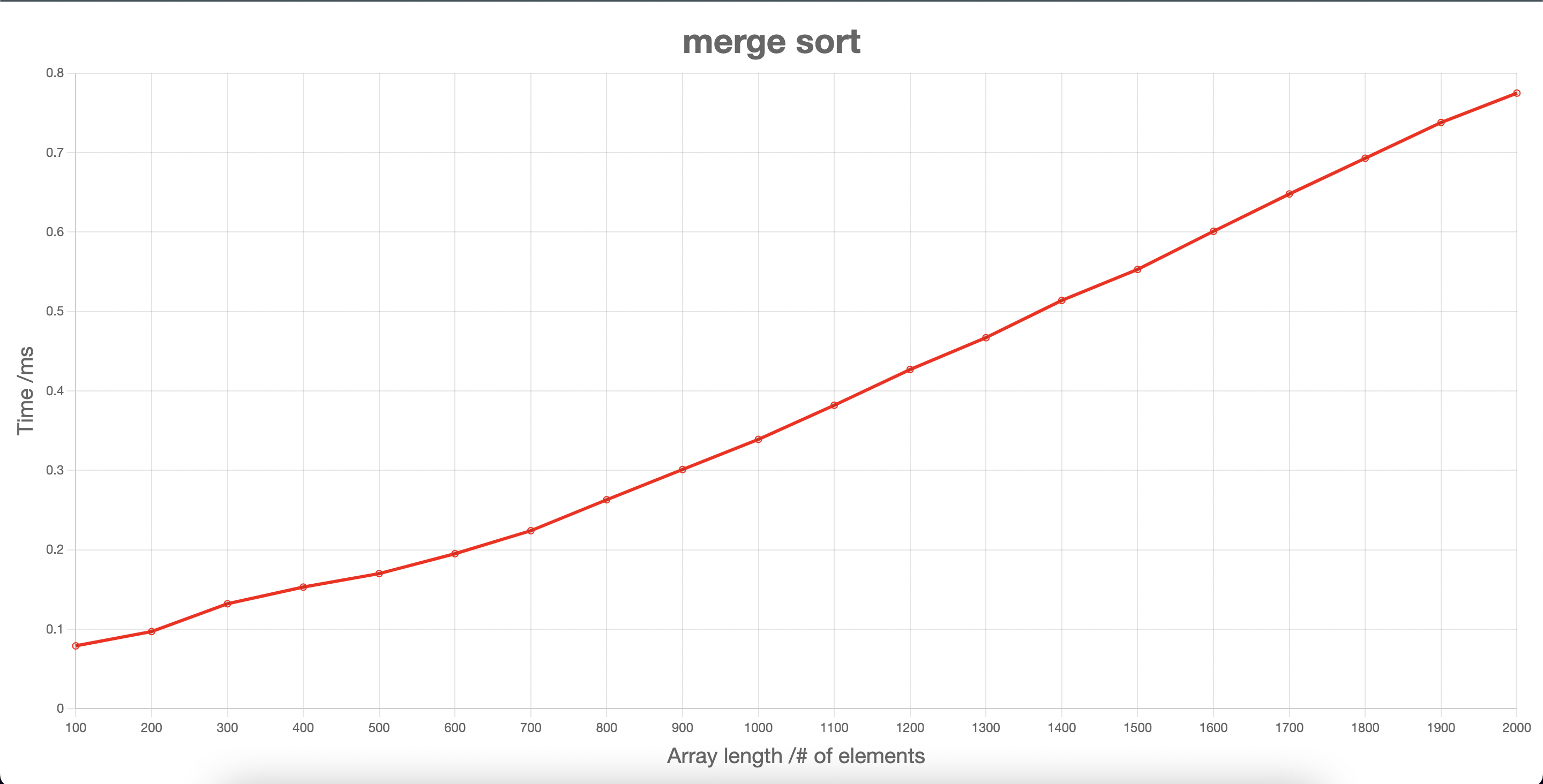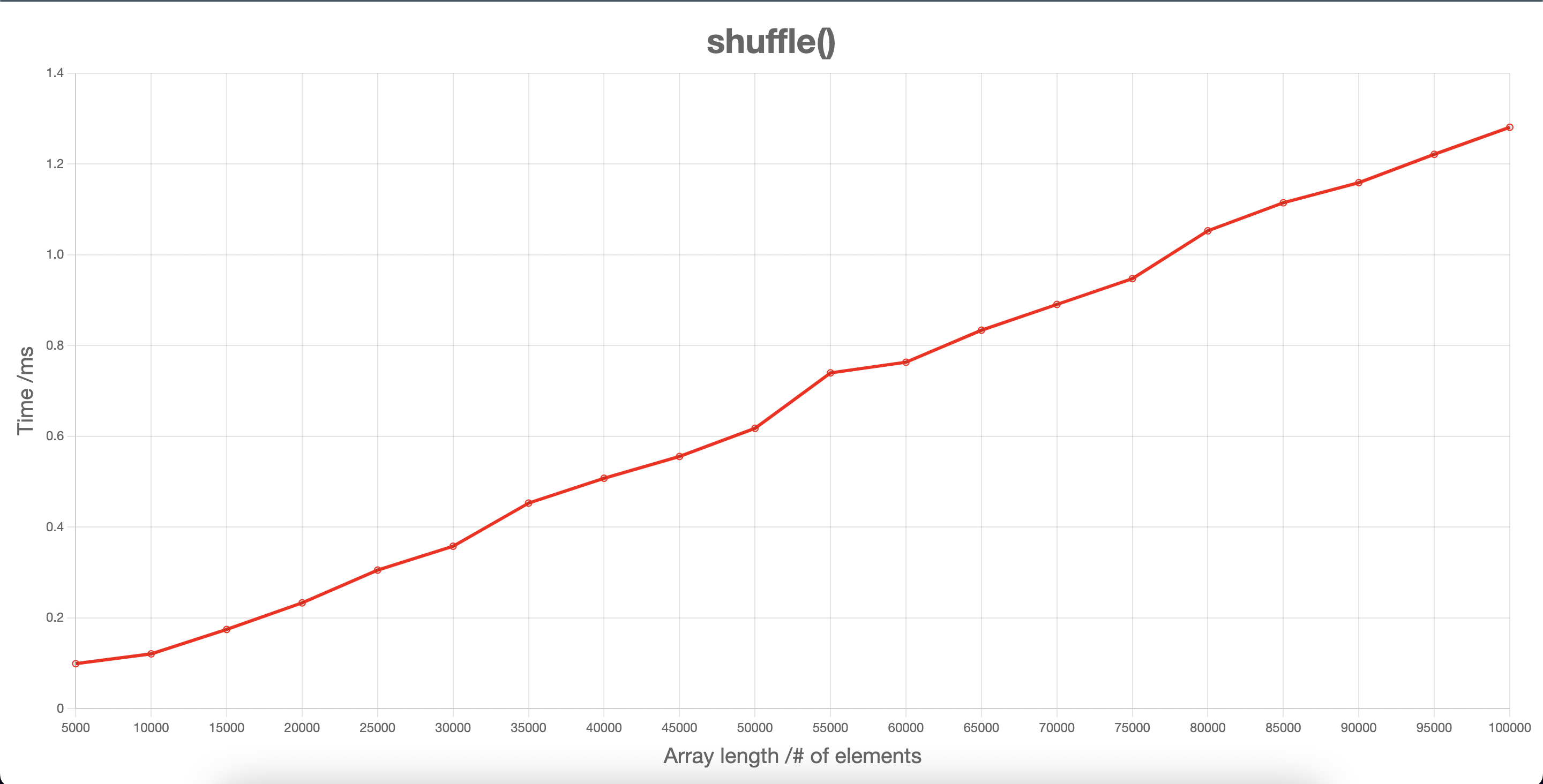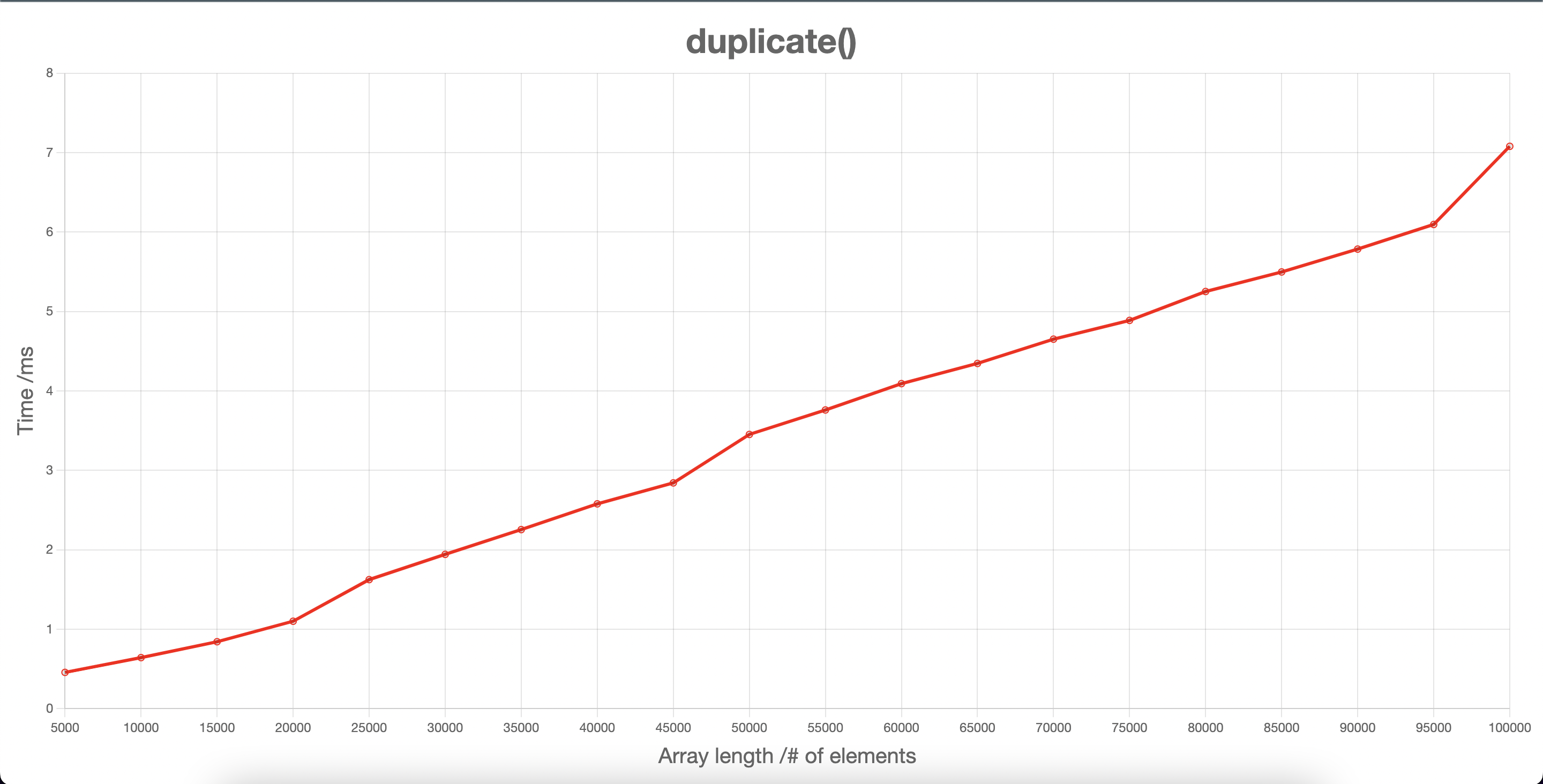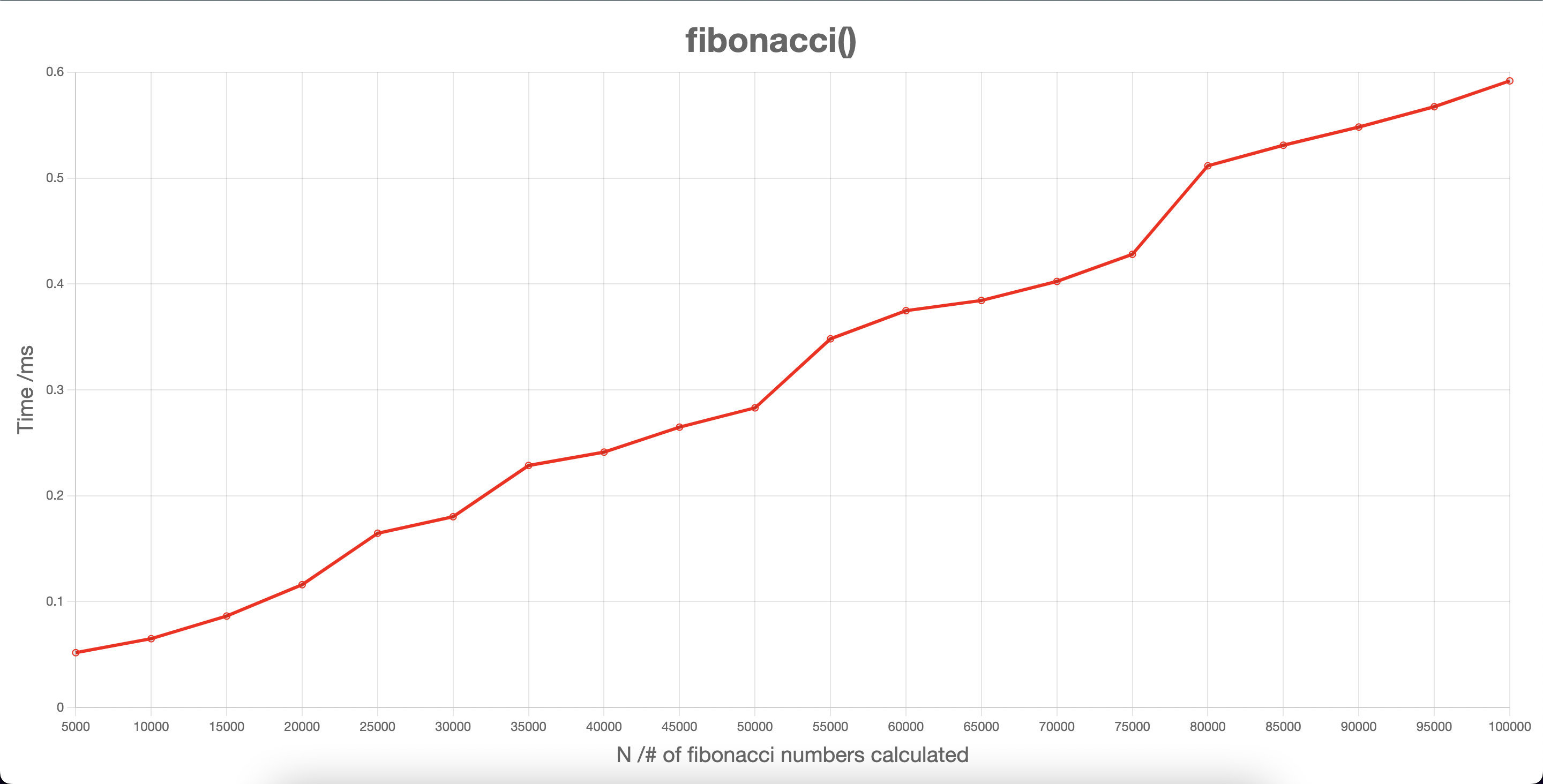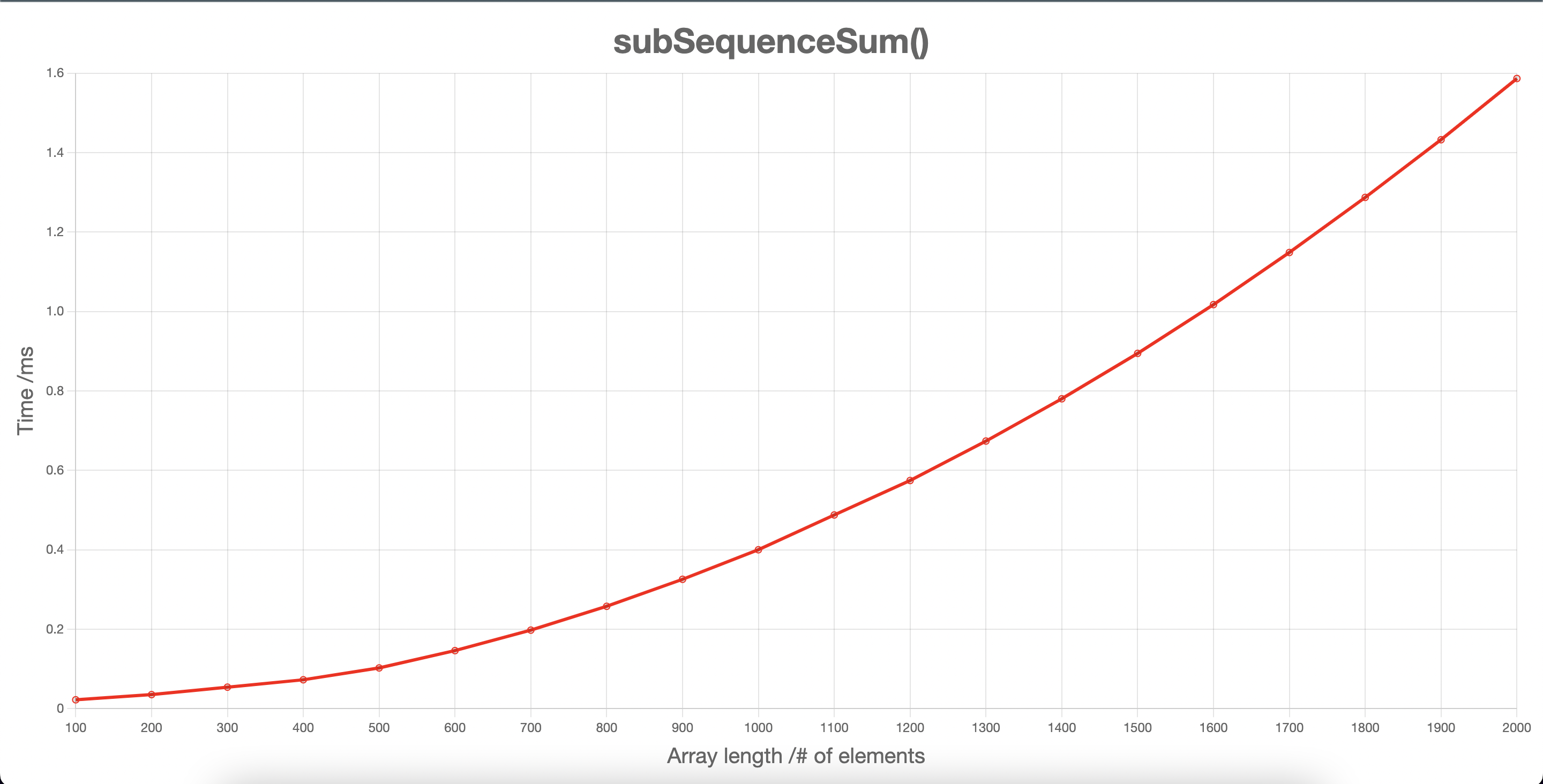This project contains a timing framework for measuring the efficiency of algorithms. This timing framework has been applied on in built JS functions and on custom built JS functions I've made myself to test my skills of algorithm desgin.
Each custom built function comes with its own feature test, unit test, JS file for plotting data using Chart.js and a HTML file for displaying the plotted graph. A package.json has also been made for each function in order to use esbuild to generate a script that is passed into the HTML file.
There are a number of helper functions that generate all the necessary data by passing the relevant function in as a callback:
generateArray(length)- Creates an array which has a length equal to the parameter passed in
- This function is called to create huge arrays which are passed into each function to test the time complexity
createDataPoint(input, callback, numberOfMeasurements, target)- Takes an average of
numberOfMeasurementsmeasurements of the time taken forcallbackto act oninput - Time is measured by using
performance.now() targetis another parameter which is exclusively used forsubSequenceSum()
- Takes an average of
saveData(callbackOne, numberOfMeasurements, increment)- Calls
generateArrayandcreateDataPoint()20 times to create an array of data points for timingcallbackOne, ready to be plotted on a graph incrementis the length of the first array being used to test the timing ofcallbackOneand is the increase to every subesquent array length afterwards
- Calls
last(array)- returns the last element from the array passed in
reverse(array)- reverses the order of the array passed in and returns the updated array
sort(array)- mutates the array passed in into ascending order and returns it
shuffle(array)- returns a new array which contains all the elements of the original in a random order
duplicate(array)- returns an array containing the elements that appeared more than once in the original array passed in
fibonacci(n)- returns an array containing the first n-terms in the fibonacci sequence
subSequenceSum(array, target)- returns true if there exists a sub-sequence in the array passed in that sums up to the target
Note: Due to a couple of slight differences in the input required for each custom function, fibonacci() has its own function to save its data and sort() has its own function to create a single data point
This program is run using Node.js, which is installed using NVM - Node Version Manager. So, if you haven't already, install NVM using:
curl -o- https://raw.githubusercontent.com/nvm-sh/nvm/v0.39.1/install.sh | bash
Now, your ~/.zshrc file will need reloading:
source ~/.zshrc
Next, you can install and start using node by running:
nvm install node
nvm use node
nvm use node will use the latest stable version. Once that is set up, you can now clone this repository and then install the necessary dependencies using:
git clone https://github.com/jmcnally17/algorithmic-complexity
npm install
npm install must be run while in the main directory.
Now you are all set up. Move onto the following section to learn how to use this program.
The graphs for each timed funtion can be found below. However, if you wish to run the program yourself, navigate to the folder of the function you wish to time and run npm run build. Then, in the same folder, open the corresponding HTML file to plot the data and view the graph in your browser. E.g. for reverse(), navigate to the reverse folder and run:
npm run build
open reverse.html
O(n)
Appears to be O(n) but is actually O(n log n)
O(1)
O(n)
O(n log n)
O(n)
O(n)
Looks like O(n) but slight uncertainty with the fluctuations
O(n2)
The Test-Driven Development (TDD) process was followed for creating every function in this project, with Jest being used as the testing framework. In order to run these tests, while in the main directory, simply run npm test. The test coverage can also be viewed by running npm run test:coverage.
